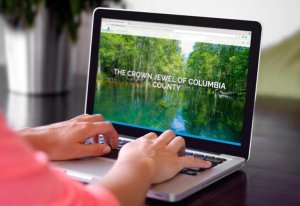Website Best Practices: Part One
April 17, 2018
First impressions are everything. A person’s first glance at your website will allow them to form several opinions pretty immediately—does the website load, is the website easy to navigate, is the information clear and easy to read, are the content and visuals engaging? All of these questions will lead the consumer to decide whether or not they continue to investigate your site. So you need to make that first impression count. Here’s how.
Loading time
First things first, does your site load quickly? If there is a delay, it might be costing you visitors. 53% of consumers will abandon a website that takes longer than 3 seconds to load.1 Google recommends that your site load in 2-3 seconds. How can you speed up your load time?
- Optimize images. Huge site banners are eye-catching and can induce FOMO, but what if they never load or take too long to load? 39% of people will stop engaging with a website if this happens.2Crop your images to the correct pixel size to fix this problem.
- Enable browser caching. When users visit your site, the information will be saved, so it will load faster for them each time they visit your site.
Try using Google’s PageSpeed Insights to test your site.
Layout
One of the most important parts of a website is its layout. If a user cannot find the things they are looking for, they will leave and probably never return. Here are some tips for creating a strategic site layout:
- Search bar. It may sound ridiculous that we have to mention this, but you would be surprised how many sites don’t have one. In addition to helping users find what they are looking for quickly, you also can check Google Analytics to see what visitors are searching for. If there are searches that come up with 0 results, make sure you write some content to respond to this need. If you haven’t already, set up Google Analytics so you can take a deeper look into how your website is performing. Check it regularly to see where you can improve.
- Contact information. 44% of website visitors will leave a company’s website if there’s no contact information or phone number.3 Our advice is to have a robust About Us page where you can house information about who you are as a company as well as contact information.
- Clear navigation. Providing a clear way to explore your site is a huge part of what can make a website successful. 50% of site visitors will use the navigation menu to orient themselves.3Helping visitors find the information they are interested in will build trust, credibility, and also will help reduce your bounce rate.
- Logo=home. Always provide a way to get back to the homepage. The most common way to do this is to make your logo clickable. When coming from a referral site, 36% of visitors will click on the logo to reach the homepage.3
- Scrolling is in. Scrolling is second nature now; users expect to scroll on pages. 76% of users use the scroll bar, with 22% scrolling all the way to the bottom of the page.4
Search Engine Optimization
We’ve had a few things to say about SEO, but there is always more to write. We’re firm believers that data should drive your website content, but not dictate it. Repeating the word “attraction” 14 times on your page will not increase your SEO value, it actually will do the opposite. But writing content about your attractions—now that is helpful and interesting to visitors and will likely increase your SEO strength. Search is the #1 driver of traffic to content sites, beating social media by more than 300%.5
General tips
- Blog it up. When used in addition to informative and inspirational content, blogs keep content on your site fresh and encourage further reading. If you have the resources to maintain a blog, we highly encourage it. 70% of consumers learn about a company through their blog rather than ads.6
- Mobile-friendly. Your site should be optimized for mobile users. Almost half of internet usage is from mobile phones.7
- Video is king. Videos are a great way to captivate visitors. They help persuade 73% of people to buy a product or a service.8However, the size of videos can slow your website down. To avoid this, we recommend uploading your video to YouTube and embedding it onto your site, rather than hosting the video on your own servers.
1DoubleClick, 2Adobe, 3KoMarketing, 4ClickTale, 5Search Engine Land, 6QuickSprout, 7SUPPLYGEM,8Animoto




